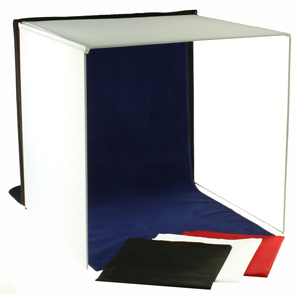ChrisR
I'm a well known grump...
- Messages
- 11,026
- Name
- Chris
- Edit My Images
- Yes
I've taken a few indoor shots of smallish things, and have been pretty disappointed. For selling on fleabay os here, it's generally been shooting downwards onto a sheet; for my attempts at still life type shots it's usually been onto a table, when I have problems with the background, and getting the lighting right. I usually use old manual film cameras, although the "product shots" are with a Fuji X10. I don't have any lights other than windows and a bit of light cardboard as a reflector.
So, I was wondering whether one of these light tent thingies that are on the bay would be a good buy, for example this one at £36 plus postage. Includes a 40 or 80 cm cubic tent, a couple of lights on stands (45W energy saving spiral, 5500 K), and a mini tripod (the latter redundant, as I do at least have a tripod). There was another one, slightly smaller and cheaper, with 2800K LED lamps.
Are these a good idea, or am I better buying a couple of lights of my own and attempting my own light tent? (Not very handy!)
So, I was wondering whether one of these light tent thingies that are on the bay would be a good buy, for example this one at £36 plus postage. Includes a 40 or 80 cm cubic tent, a couple of lights on stands (45W energy saving spiral, 5500 K), and a mini tripod (the latter redundant, as I do at least have a tripod). There was another one, slightly smaller and cheaper, with 2800K LED lamps.
Are these a good idea, or am I better buying a couple of lights of my own and attempting my own light tent? (Not very handy!)




